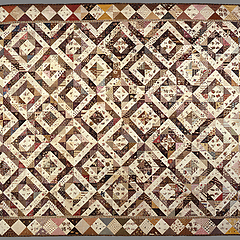Paper cutting art, known as "Papierknipkunst," is the craft of creating shapes by cutting or carving paper with scissors or a knife. When these cutouts are placed on a differently colored background, the outlines create a striking contrast. A commonly used technique involves folding the paper in half to achieve a symmetrical design. Often, after unfolding the paper, the artist adds different details to the left and right sides, introducing variations. Classic motifs include hearts, swans, and folkloric patterns. In the past, many cutouts were made for special occasions such as births or weddings, often featuring traditional motifs and Biblical stories. Nowadays, the focus is more on nature, everyday life scenes, and experimenting with forms.
The Inventory Intangible Cultural Heritage (ICH) in the Netherlands contains ICH of which the communities, groups or individuals involved have written a safeguarding plan. Those plans are reviewed by an independent review committee. Every three years an evaluation of the safeguarding takes place.
Description
Community
History
Safeguarding
2022-2024
- Through the website www.knipacademie.nl practical tools are offered to those interested.
- Because young people are hard to reach with guest lectures at school, they will be approached through social media.
- The available archive material is inventoried and recorded in a digital database that is published on the Internet. (www.knipperslexicon.nl).
- In the anniversary year 2023 two manuscripts, one by Eline Huizenga Onnekes and one by Tjeerd Lever, will be published digitally.
- Contacts within the cultural world will be established and where they already exist expanded.
- Collaborations with medium-sized museums and galleries for exhibitions are started.
- With the help of the website, social media and a clipping lexicon (www.knipperslexcon.nl) more visibility will be created online.
- The possibility of organizing a course on how to run courses is being investigated.
- More visibility will be created in lifestyle magazines and online, so that the paper cutting art is brought to the attention of people who currently do not know what they are missing from the paper cutting art.
- More online content will be created so that paper cutting art is brought to the attention of new practitioners. Specifically, this will be done, among other things, through www.knipacademie.nl
Contact
Nederlandse Vereniging voor Papierknipkunst-
prov. Utrecht
Website



